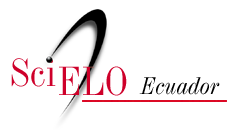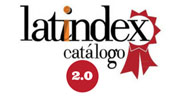Diagnóstico de indicadores entéricos en cilantro (Coriandrum sativum) y perejil (Petroselinum sativum) que se expenden en mercados populares del norte de la ciudad de Quito
DOI:
https://doi.org/10.29019/enfoqueute.v6n1.54Palabras clave:
Indicadores entéricos, Escherichia coli, cilantro, perejilResumen
(Recibido: 2015/01/20 - Aceptado: 2015/03/25)
Se analizaron 108 muestras (54 de cilantro y 54 de perejil) obtenidas de manera aleatoria en tres puestos de expendio de tres mercados del norte de la ciudad de Quito seleccionados para este estudio. Se realizó la determinación de Coliformes Totales (CT), Coliformes Fecales (CF) y Escherichia coli (EC). La población de CT para cilantro fue de 5.09 log UFC/g y 6.39 log UFC/g para perejil. Se obtuvieron valores de CF de 607.0 NMP/g en el mercado uno, 596.7 log NMP/g en el mercado dos y 474.2 NMP/g para el mercado tres. El 23.1% de las muestras de perejil presentaron recuentos positivos para Escherichia coli mientras que para cilantro el 14.8% de las muestras fueron positivas. La presencia de indicadores entéricos (CT, CF y EC) fue independiente del mercado y puesto de expendio lo que indica un alto nivel de contaminación y demuestra la necesidad de un control microbiológico en el sistema de riego, cosecha, transporte y condiciones higiénicas de los manipuladores para asegurar la calidad de los vegetales tipo hoja, es recomendable establecer una normativa local para evaluar la calidad microbiológica de este tipo de alimentos.
Descargas
Publicado
Número
Sección
Licencia
Los autores retienen todos sus derechos (© copyright).
- Los autores retienen sus derechos de marca y patente, y también sobre cualquier proceso o procedimiento descrito en el artículo.
- Los autores retienen el derecho de compartir, copiar, distribuir, ejecutar y comunicar públicamente el artículo publicado en Enfoque UTE (por ejemplo, colocarlo en un repositorio institucional o publicarlo en un libro), siempre que se dé el reconocimiento de su publicación inicial en la revista Enfoque UTE.
- Los autores retienen el derecho a hacer una posterior publicación de su trabajo, de utilizar el artículo o cualquier parte de aquel (por ejemplo: una compilación de sus trabajos, notas para conferencias, tesis, o para un libro), siempre que indiquen la fuente de publicación (autores del trabajo, revista, volumen, número y fecha).
























